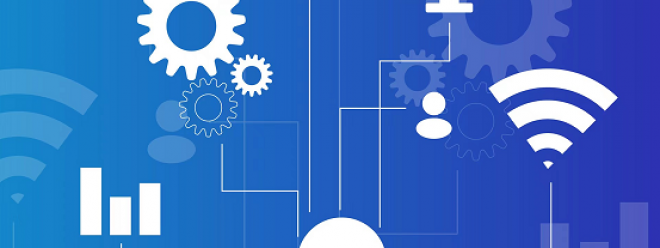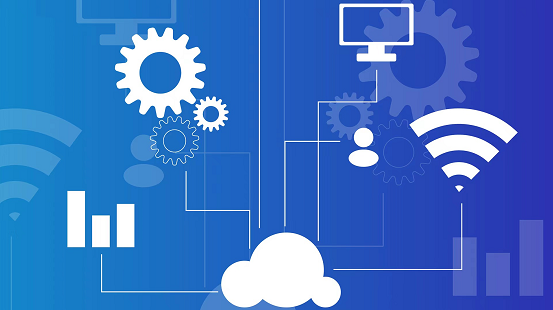How 5G, edge computing, and IoT are modernizing traditional businesses


- Over the past two years, the global pandemic and lockdowns have driven the use of digital and disrupted countless traditional businesses.
- Telcos in the Asia-Pacific region plan to spend $331 billion on 5G deployments between 2020 and 2025, and they are expected to account for 66 percent of global 5G subscriptions by 2024.
- Laying the groundwork with modern infrastructure will help businesses maintain a competitive advantage and take advantage of the new opportunities that the arrival of 5G will bring.
The global pandemic and lockdowns have driven the use of digital and disrupted countless businesses over the past two years. Given the continued pace of digital innovation, many organizations are forced to make rapid strategic changes in this context. With the advancement of 5G and modern technological solutions, this ratio has changed.
The Asia-Pacific region currently leads the world in 5G adoption and is expected to maintain this position in the future. Telcos in the region plan to spend $ 331 and they are expected to account for 66% of global 5G subscriptions by 2024. Businesses in the region have the opportunity to establish themselves as innovative suppliers while setting the global standard for 5G services. 5G is expected to contribute as much as $ 12.3 as it aims to improve data transfer and connectivity, which will be critical for the future of IoT and connected devices.
However, to achieve this, they must make the best use of available resources to build a robust infrastructure and deliver business value. Legacy applications are no longer commercially viable because they have limited bandwidth and cannot fully optimize emerging technology solutions. Legacy application modernization is an emerging need at a time when resource efficiency and technology adoption are critical.
What is Applied Modernization Technology?
As a concept, applying modern technology refers to upgrading current software to be compatible with more modern and emerging computing technologies. This upgrade also brings greater agility, efficiency and speed to the operational and strategic functions of technology adoption.
Some of the key benefits enterprises can gain from implementing 5G technology and modernizing legacy applications are as follows:
- Faster network speeds : 5G is expected to unleash network speeds of up to 50 GBPS. This will revolutionize all movement and processing of data. By modernizing legacy applications in a timely manner, businesses will be able to maximize the potential of all their technology infrastructure and experience improved performance, especially with new technological advancements such as IoT, Augmented Reality, Virtual Reality, etc.
- Edge Computing/IoT: 5G is fundamental to realizing the full potential of IoT. 5G will foster innovation across industries and provide a more robust platform for a wider range of IoT applications. This is expected to soon be the key to artificial intelligence and business automation.
- Streaming apps: As most B2C and B2B functions migrate to smartphone apps, the introduction of 5G is expected to improve app experiences with faster streaming and faster results. A mobile-first approach to marketing and operations promises to benefit and optimize business processes, especially with 5G, helping the world become more mobile. Thanks to the successful combination of cloud computing and 5G networks, the distribution of real-time data and live streaming media is promising.
- Cloud-based integrated IT infrastructure: A modern cloud-based technology infrastructure makes integrating a wide variety of technical support programs simple and sensible. This could result in a smarter, faster, and more seamless operational network that can optimize artificial intelligence, automation, and intelligent data analysis, while maintaining data security and privacy.
- Resource optimization: Legacy application modernization helps businesses optimize legacy assets by transforming them into more relevant and smarter ones. According to 5G, this can accelerate the adoption of emerging technology solutions, strengthen cloud-based infrastructure, and ensure consistent performance through cost-effective and efficient processes.
- Higher levels of customer satisfaction: Increased operational efficiency, faster streaming, and an enhanced in-app customer experience will ultimately lead to higher customer satisfaction. In terms of customer service capabilities, 5G-enabled solutions can improve customer satisfaction by leveraging artificial intelligence and data intelligence to help improve service efficiency.
However, when transforming business applications, it is critical to partner with trusted experts who can not only assist in modernizing legacy applications, but also customize and effectively integrate cloud migration strategies to maximize efficiency. Trusted experts can help companies transform their technology infrastructure in three key areas:
- Infrastructure Modernization: Technology infrastructure modernization is critical to the entire development and upgrade of obsolete applications. Unfortunately, modernization has focused too much on cloud migration, although there is more to it. For example, microservices architecture, Amazon Web Services, partitioning, and other techniques all contribute to building a more agile and efficient infrastructure, which is critical to the entire application modernization process.
- UI/UX Modernization: Customer success and experience are becoming increasingly important to successful organizations. Especially in the digital environment, effective technology solutions have become an important differentiator for the overall customer experience. Modernization of UX (User Experience) or UI (User Interface) enables businesses to cater and improve customer experience while saving money by leveraging the latest automation, data analytics and intelligent solutions.
- Data Migration: One of the most important aspects of application modernization is migrating data from physical servers to a cloud-based network, often referred to as "rehosting," and should be done by a cloud migration solution specialist. In addition to making operational networks more flexible and secure, data transfer greatly aids cloud data security, resource optimization, and the integration of various technology solutions, including the use of artificial intelligence for data analysis and automation.
road ahead
Laying the groundwork with modern infrastructure will help businesses maintain a competitive advantage and take advantage of the new opportunities that the arrival of 5G will bring.
Application modernization and optimization combined with 5G facilitates continuous business innovation. By removing physical constraints in fully virtualized environments, applications can be rapidly deployed from anywhere across data centers, clouds and devices.